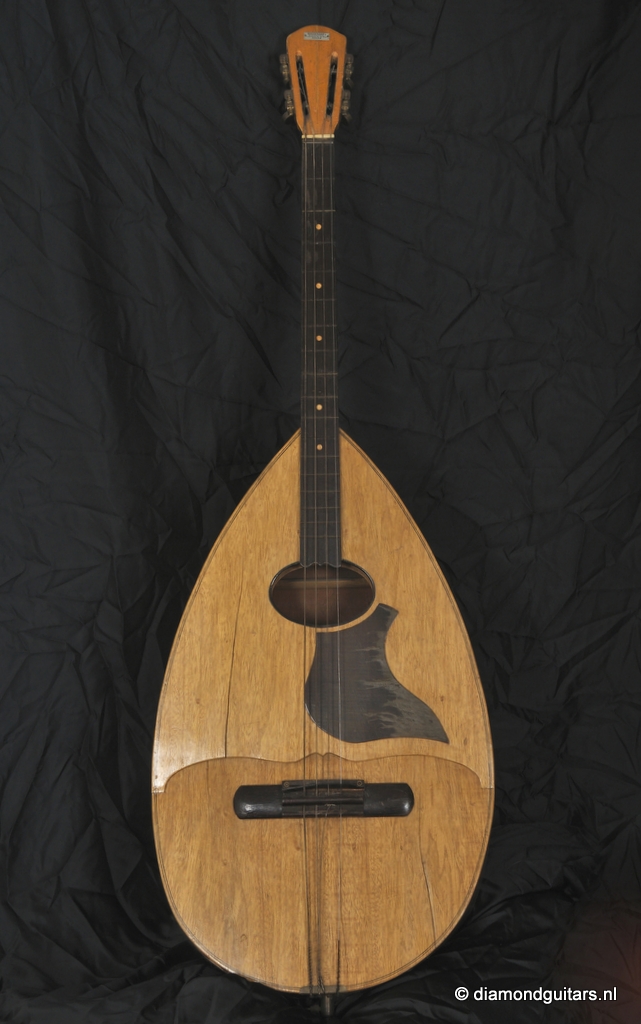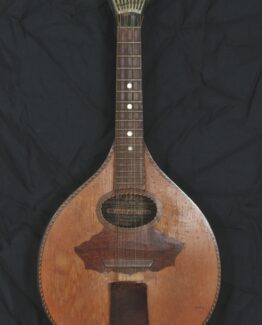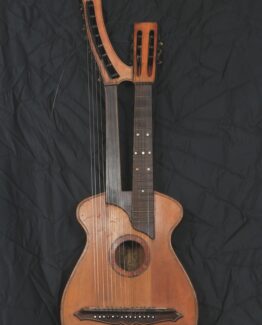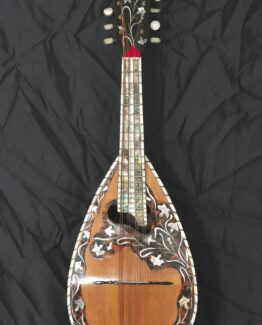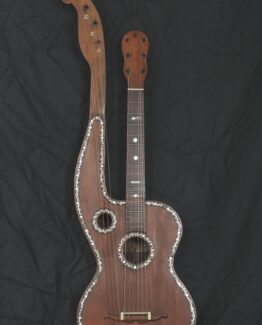Description
This collection of 10 Lucien Gélas build instruments represent a distinctive design, patented in the early 20th century by the Parisian luthier Lucien Gélas.
Lucien Gélas (1873–1944), a classical guitarist, teacher, and luthier from France. The guitar features two soundboards (tops) separated by a resonant space. The inner top is set at an angle relative to the outer one, creating a distinctive tilted profile.String Routing: Strings pass through the bridge on the inner top and attach at the bottom. This creates an angular tension change across the bridge, enhancing the inner top’s vibration. The patent was filed in Paris in 1905, and Gélas was awarded gold medals for his design at both the Bordeaux Exhibition (1907) and the Brussels Exhibition (1910). While Gélas invented and patented the design, guitars were built in collaboration with makers such as Théodore Gaudet, Jean Roviès, Beuscher, Richard Jacob, among others.
The construction is a significant innovation in modern stringed instrument building. The double-top structure provides exceptional projection, dynamic range, and tonal nuance. Owners and reviewers often note that these instruments project as well as—or even better than—modern guitars, with rich color and resonance. Notable guitarists who favored Gélas guitars include Heinrich Albert, Luise Walker, and Bruno Henze. Albert particularly praised its “carrying sound, ease of responsiveness, and tone color. Although rare today, Gélas double-top guitars are prized by collectors and performers for their historical importance and unique acoustic character.

